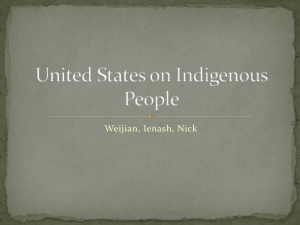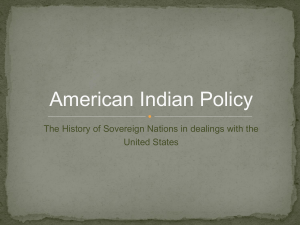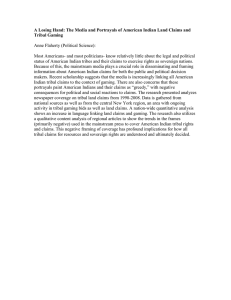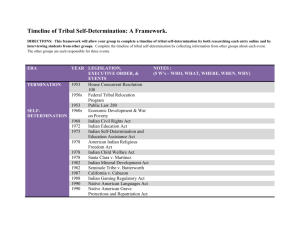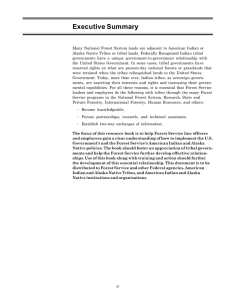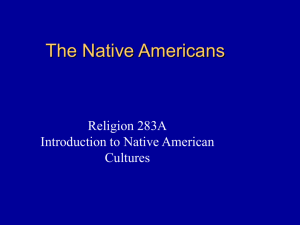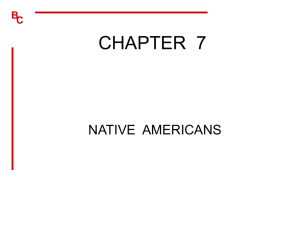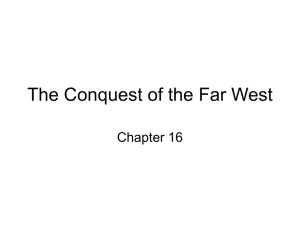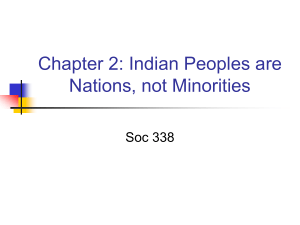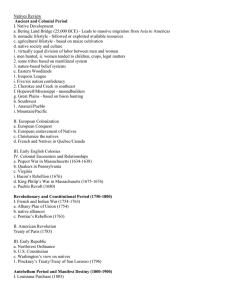Add Header – ODE Apple, no shaping - ODE IMS
advertisement
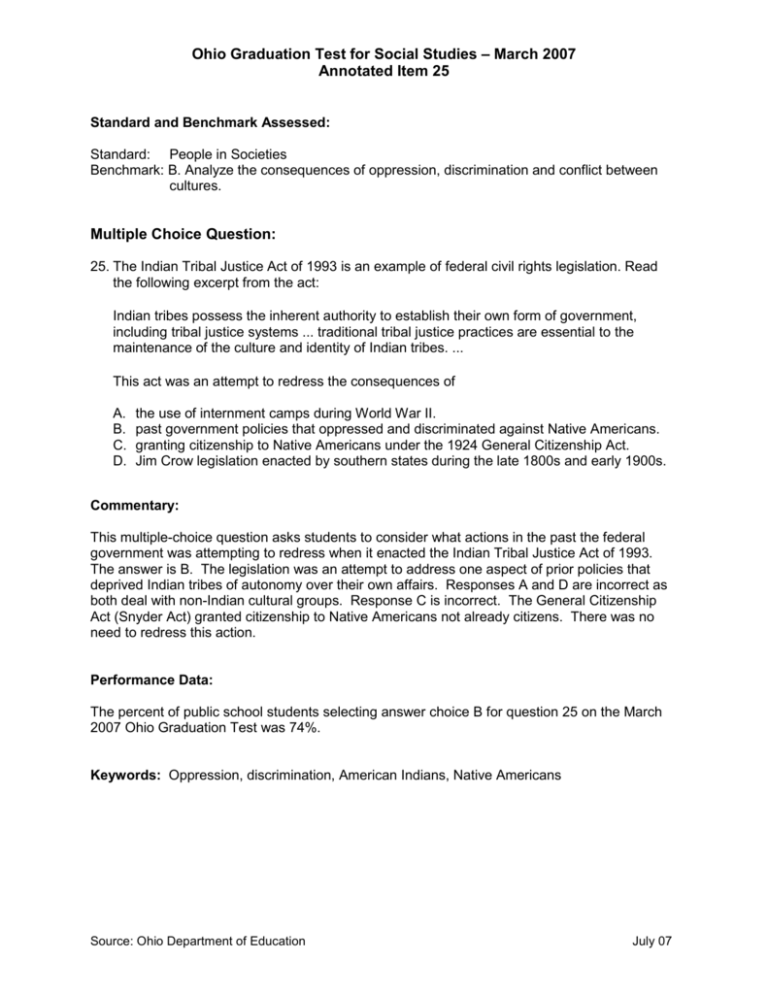
Ohio Graduation Test for Social Studies – March 2007 Annotated Item 25 Standard and Benchmark Assessed: Standard: People in Societies Benchmark: B. Analyze the consequences of oppression, discrimination and conflict between cultures. Multiple Choice Question: 25. The Indian Tribal Justice Act of 1993 is an example of federal civil rights legislation. Read the following excerpt from the act: Indian tribes possess the inherent authority to establish their own form of government, including tribal justice systems ... traditional tribal justice practices are essential to the maintenance of the culture and identity of Indian tribes. ... This act was an attempt to redress the consequences of A. B. C. D. the use of internment camps during World War II. past government policies that oppressed and discriminated against Native Americans. granting citizenship to Native Americans under the 1924 General Citizenship Act. Jim Crow legislation enacted by southern states during the late 1800s and early 1900s. Commentary: This multiple-choice question asks students to consider what actions in the past the federal government was attempting to redress when it enacted the Indian Tribal Justice Act of 1993. The answer is B. The legislation was an attempt to address one aspect of prior policies that deprived Indian tribes of autonomy over their own affairs. Responses A and D are incorrect as both deal with non-Indian cultural groups. Response C is incorrect. The General Citizenship Act (Snyder Act) granted citizenship to Native Americans not already citizens. There was no need to redress this action. Performance Data: The percent of public school students selecting answer choice B for question 25 on the March 2007 Ohio Graduation Test was 74%. Keywords: Oppression, discrimination, American Indians, Native Americans Source: Ohio Department of Education July 07


